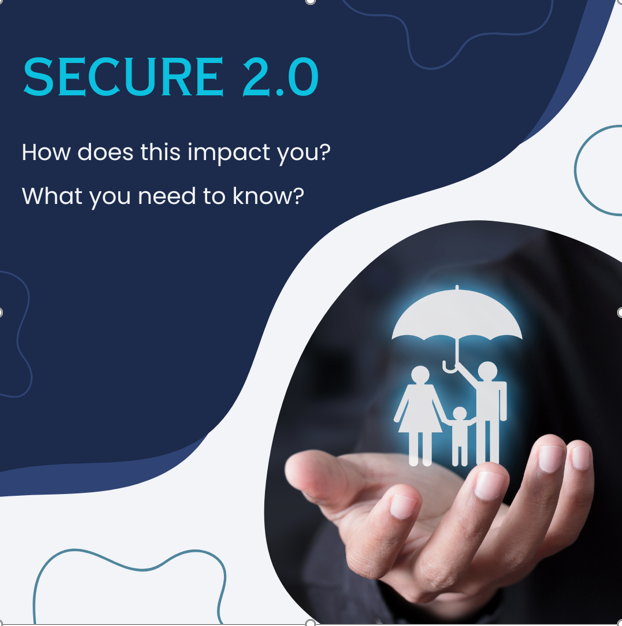Posted On: August 10, 2023 by Hogan - Hansen in: 401(k) Retirement Roth

We are sharing some important information that may impact you as a result of the SECURE 2.0 Act of 2022. As you may know, SECURE 2.0 was signed into law on December 29, 2022 and includes reform that seeks to expand retirement coverage and savings. The new law includes both required and optional changes for 401(k) plans, as well as other types of retirement plans.
Age 50 Catch-Up Contributions – A catch-up contribution allows individuals age 50 or older to save more in their 401(k) accounts above the annual contribution limits set by the IRS each year. Historically, catch-up contributions could be made on a pre-tax or Roth basis with no income threshold. Under SECURE 2.0, if catch-up contributions are permitted under a plan, then those contributions must be made on a Roth (after tax) basis for employees whose wages were greater than $145,000 in the prior calendar year. This change is effective for taxable years beginning after December 31, 2023.
If you are an employer/plan sponsor, you will want to be sure that your plan allows for Roth contributions. If not, those provisions will need to be adopted prior to December 31, 2023. We recommend that you also check with your payroll provider to make sure that they address the necessary changes in their payroll system. If you work directly with Hogan Hansen, P.C. for your 401(k) plan, we have these changes underway and will be in touch to finalize these with you prior to October 1, 2023.
Increase in Catch-Up Contributions – Under current law, employees who have attained age 50 can make catch-up contributions up to the $7,500 limit in 2023. Beginning January 1, 2025, individuals age 60 through 63 years old will be able to make catch-up contributions equal to the greater of (1) $10,000 or (2) 150% of the regular catch-up contribution.
Required Minimum Distributions – A Required Minimum Distribution (RMD) is the amount you must withdraw from your retirement account each year after reaching the required beginning date (currently 72 years of age). SECURE 2.0 increases the required beginning date for Required Minimum Distribution purposes. The required beginning date is increased from age 72 to age 73 for individuals who attain age 72 on or after January 1, 2023. This then increases further from age 73 to age 75 for individuals who attain age 74 on or after January 1, 2033. Another key change within SECURE 2.0 is in regard to RMDs and Roth contributions. Prior to SECURE 2.0, a participant in a 401k plan could avoid pre-death RMD rules for their Roth account balance by rolling it over to a Roth IRA. SECURE 2.0 allows a participant’s Roth account balance to be excluded from the annual RMD calculation so it can remain in the 401k plan.
If you have any questions regarding this information, please do not hesitate to contact us. We will continue to keep you informed as more guidance and clarification is received on this legislation.


0 comments